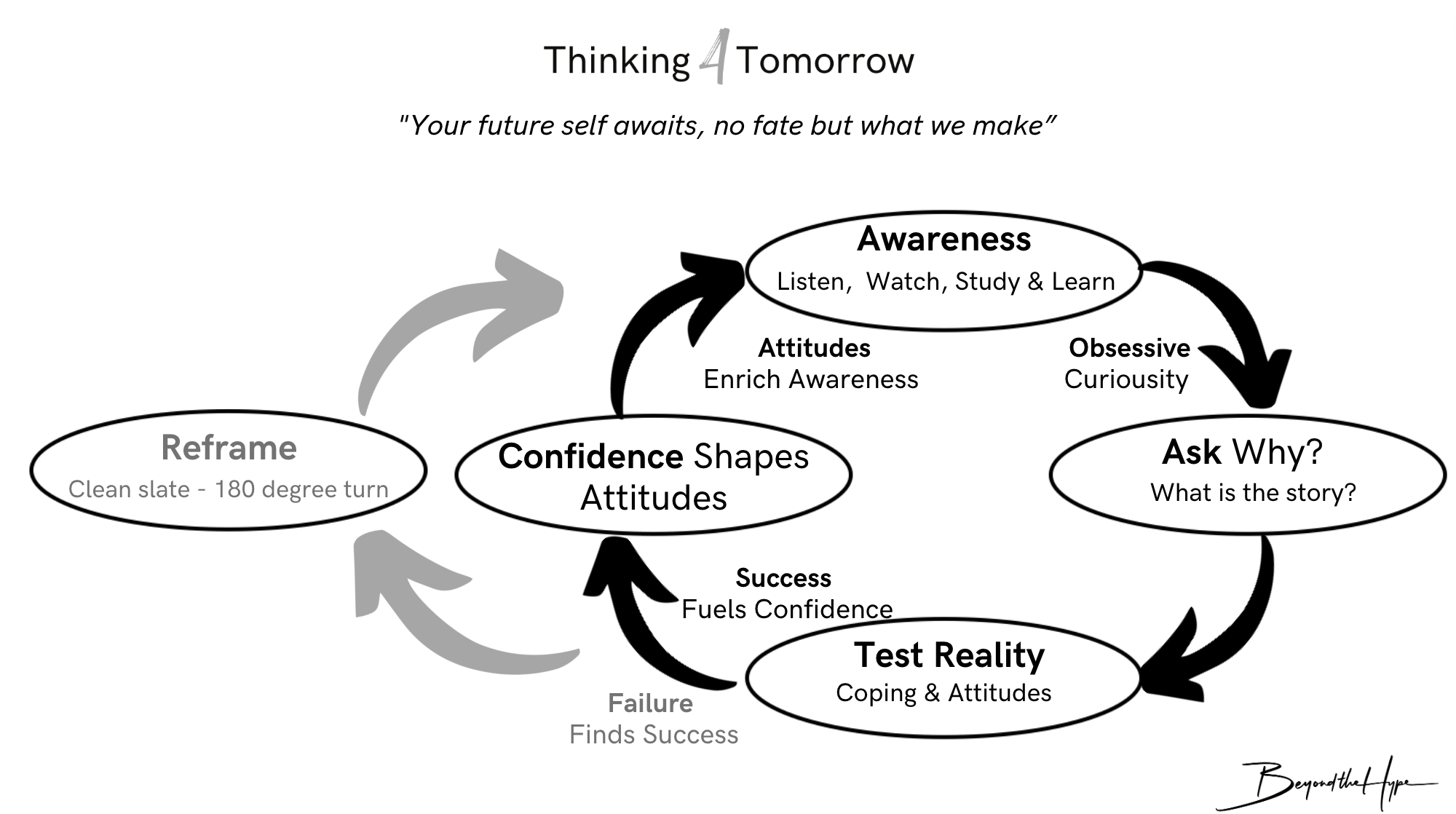Conformity
The term conformity is often used to indicate an agreement to the majority position, brought on by either a desire to ‘fit in’ or be liked.

I stumbled across a TikTok video from a young single mom making her way through life as a dynamic and successful social media consultant. Stephanie, @CoolMomCEO, IG @thesocial_vine has extra energy to burn. She lets her ideas fly in a frenetic way that comes at you like a brilliant artist splashing bright paint colors on a white canvas. Her TikToks are funny, inspirational, and instructive. An Energizer bunny of a lady, her advice is worth her weight in gold.
One video stood out to me, I labeled it “Cringe”. 19 seconds of motivation with a middle finger to conformity. I did my best to get the best parts on paper. I have linked the video for you to enjoy. Here goes my translation of Ms. Stephanie:
“Let people think you are cringe. Want to start a make-up YouTube channel? Do it! Want to start posting your workouts on TikTok? Do it! ….”
“It is scary to be judged by like your grandma, or your parents or people from your hometown. Whoever.”
“It is even scarier to get to the end of your life and realize that you let people rob you of the life experiences you were supposed to have because you were scared of what they thought of you.”
I like to get my definitions straight in my head. Cringe: causing feelings of embarrassment or awkwardness. Conformity: behavior in accordance with socially accepted conventions or standards.
The term conformity is often used to indicate an agreement to the majority position, brought on by either a desire to ‘fit in’ or be liked, because of a desire to be correct, or simply to conform to a social role. Every generation is its own “monoculture”, a governing pattern or system of beliefs that people unconsciously accept as “Right” or “truth.”
Unfortunately, conformity is the death knell of creativity and innovation.

Let me expand on that my assertion with a quote.
“Where all think alike, no one thinks very much.” – Walter Lippmann (1923)
In 1958, Psychologist Herbert Kelman identified three major types of conformity: compliance, identification, and internalization in his paper “Compliance, Identification, and Internalization Three Processes of Attitude Change”. Compliance is the public conformity, while possibly keeping one’s own original beliefs for oneself. The 1950s version of political correctness. Identification is conforming to someone who is liked and respected. Lastly, internalization is the deepest form of conformity and often results in long-term changes to both public and private feelings, beliefs, or behavior. Internalization creates converts.
Looking at the photograph below, where do you think the Soviets soldiers are in Professor Kelman’s three categories?

Conformity, at some level, is present in all societies. Fifteen thousand years ago, tribal groups designed arrowheads in the same way, even though their arrows were different from those of neighboring groups. Conformity is linked with mimicking, which is our primary method of learning.
Conformity is found in clothing designs, with members of a tribe dressing similarly. Conformity is as old as our species. As societies smashed together tighter in urbanization and complexity, the pressure to conform grew. Part of living together demands that rules, ordinances, and laws provide conformity-dependent boundaries to social interaction.
Social psychology distinguishes between two reasons for aligning one’s attitude, opinion, or behavior to those of others. Informational conformity occurs when one adopts the view of others because others are assumed to possess more knowledge. Normative conformity refers to the act of conforming to the positive expectations of your tribe in order to be liked and accepted by them. This is where we lose ourselves.
Stephanie’s (@CoolMomCEO), “Cringe” rant was in opposition to Normative conformity. Do not let your tribe get in the way of your experiences and the “what might be” of your adventure. “Do it!” she challenges. I agree with the lady. No question.
My attack on conformity is aimed at both Informational and normative conformity. Adopting the attitudes, opinions, and behaviors of others because they are assumed to possess more knowledge is just intellectually lazy. Yes, I said it, intellectually lazy. I understand the need to triage a situation. However, in the long-term do your own homework in areas of importance in your life. Do not farm out your intellect and opinions. You are one of kind. An original.
The agency that you are surrendering can often result in a nasty form of groupthink. The term “groupthink” was first introduced in the November 1971 issue of Psychology Today by psychologist Irving Janis. Janis had conducted extensive research on group decision-making under conditions of stress.
Since then, Janis and other researchers have found conforming to groupthink, individuals tend to refrain from expressing doubts and judgments or disagreeing with the consensus. Remember an entire board of directors in 1985, thought it was a great move to fire Steve Jobs from Apple. Or how about when Coke that it was a good idea to change the original Coke formula?
Janis called this phenomenon “Groupthink” cleverly picking this highly suggestive Orwellian mode of expression “doublethink” from Orwell’s novel.

According to Janis, “groupthink” highlights an excessive form of concurrence-seeking among members of high prestige, tightly-knit groups. The results are devastating. A very distorted view of reality coupled with excessive optimism produces hasty and reckless policies and neglect of ethical issues. These deficiencies combine to make these groups particularly vulnerable to initiating or sustaining projects that bang heads with the feedback from reality.
Examining the Thinking4Tomorrow process graphic below let’s use losing weight and getting into shape as our target goal. Notice below that starting at awareness you are listening, watching, studying, and learning while asking why. You begin to research the major different approaches to getting into shape. Cardio, weights, diet, and combinations of the three. In raw terms, to lose fat your must burn more calories and fat than you consume. To build muscle you must provide resistance training and or weights. Cardio requires raising your heart rate by biking, fast hiking, or running. Whatever strategy you choose requires everyday consistency to achieve any results.

In your research phase, you ask great questions and arrive at a plan of action to test reality. Opinions of friends, family and experts are taken into your thinking and decision process but you are testing your reality, not theirs. Everyone’s body is a little different. What works well for one person, might not work as well for another. This is your reality. Your body. Your getting in shape process, no one else’s.
From testing reality to success or failure. Keep what works. Throw out what does not and start over. The process is ongoing and never-ending. You will become an expert on your own body. And why not? It’s your body in the mirror, not someone else’s. Remember, be kind to yourself, but stay motivated with your eye on the prize.

The really cool part comes next. As you see results, success fuels confidence. Confidence shapes your attitudes. Attitudes enrich your awareness. With your newly refined awareness, you can tweak your “getting in shape” process again and again. All the while, your passion for the process of “getting results” makes you relevant in your little slice of the world. People will be asking you what are you doing to be so fit, happy, and vital. And, that validation feels really good!
Passionate, relevant, and armed with a process for change, you have power over your circumstance. And, trust me when I say, power is the ultimate aphrodisiac.
The Thinking4Tomorrow process works on any facet of your life. Coupling. Career. Raising kids. Or your pastimes and hobbies. In my upcoming book, I will share the forces shaping this process and the science behind it. Yes, this post is a teaser. I will leave you with a mindset checklist to get your mind cranking.
A Thinking4Tomorrow Mindset means:
- Making conscious decisions dictate your day—not fears or impulses.
- Think at least 4 steps ahead of big decisions
- Happiness is not how many things you get done, but how well you do them.
- Listen to hear, not to reply. Watch to observe, not intervene.
- Remember you are the only person responsible for your life and happiness.
- Life will never get easier; you will get smarter, more passionate, relevant, and powerful.
Before I go, please drop in on Stephanie, @CoolMomCEO, IG @thesocial_vine. Her content will truly bless you.
Until next time. Travel safe.

